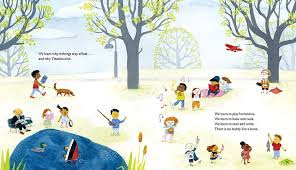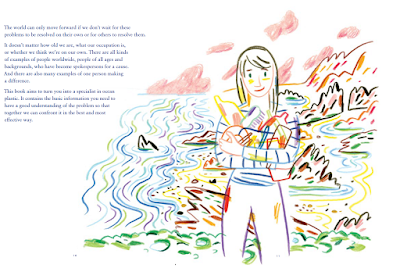"It grows cooler as we enter the forest, and darker.
"Dovey Mae?" Grandma calls out.
"I'm right here." I answer. "Right over here."
"The darkness isn't anything to be afraid of, child. If
you wait just a little, your eyes will learn to see, and
you can find your way. Hold on to my apron, now.""
This captivating childhood memory of a grandchild for her beloved grandmother, is adapted from an adult book written by Dovey Johnson Roundtree and Katie McCabe, Mighty Justice (2019). The epilogue explains the evolution of this book.
"The girl in the story, DOVEY JOHNSON ROUNDTREE, was born more than one hundred years ago
in Charlotte, North Carolina. During a time of racial inequity in America, she grew up to become a
legendary civil rights lawyer, fighting for justice. No matter how dangerous the fight was, she refused to quit. She believed that a better day was coming for African American people, because that was what she had been taught by her bold and brave grandmother, Rachel Bryant Graham. Dovey loved to tell stories of her Grandma Rachel. The story Dovey loved best is the one you are about to read."
Their day begins before dawn. The two find their way through darkness to the woods where they will pick blackberries. Others join them, all slipping secretly along a planned path. They are friends with the same mission. The child stays close to her grandmother, fearful of the night's sounds and the dark. As dawn nears, birdcalls break through the silence and guide the berry-picking group to their destination.
The picking begins, and continues as the heat builds and the sky lightens. The promise of rich, moist berries to be eaten throughout the day keeps them at the shared task. Tasting is approved and appreciated. Grandma teaches Dovey all she knows about picking.
Suddenly, the two and stand together in a warm hug.
""Here she comes!" Grandma whispers.
She draws me to her, and together we
watch the pink turn to red, the red to gold."
Together they watch the sunrise ... a memory that Dovey will cherish until the day she dies.
The imagery of the story told is perfectly interpreted in digital artwork that has a luminous touch. The soothing comfort of nature and her grandmother's presence are all Dovey needs to forever recall this very special moment in her life.
Back matter shares the importance of the relationship between the two. It also includes an authors' note, a timeline, and a bibliography.




























































